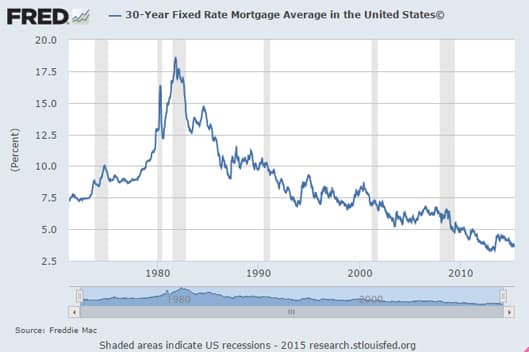

Financing a home with a credit card is virtually unheard of. If you’re going to buy a home and don’t have cash for what will probably be the largest purchase of your life, you’ll need a home loan.
While the most common type of home loan is a 30-year fixed loan with a set interest rate, it isn’t the only type of loan available. Whether you’re buying, refinancing or remodeling, or just want to pull money out of your home to pay for a child’s college education, there are many types of home loans out there.
A home loan that is paid on time is one way to improve a credit score. It can also be one of many types of loans worth having to show a diversity of credit.
According to FICO, which compiles credit scores, a credit mix determines 10 percent of a FICO score. The diversity will be more important if you don’t have a lot of other information to base a score on.
Here are four common types of home loans:
1. Fixed-rate mortgages
This is the most common type of mortgage, giving borrowers a set interest rate on the loan for a set period of years. The most common terms are 15 years and 30 years.
A major benefit is that a fixed-rate loan provides certainty over mortgage repayments for a number of years, meaning the rate won’t change during that time. It can be a hedge against inflation and is usually attractive for people who plan to stay in their house for five to seven years.
Having a mortgage spread out over 30 years also makes the monthly payments lower and more affordable.

Although you lock in rates when you apply for one, the average fixed-rate mortgage has fluctuated greatly over the decades. Currently, they’re at one of their lowest points in history — a huge benefit for homebuyers today.
The downsides are the rates and payments are usually higher than shorter-term home loans or adjustable mortgages, and if you decide to sell within five years, you could pay more in interest.
2. Adjustable-rate mortgages
Also called ARMs, these home loans have lower interest rates than fixed rate mortgages and provide lower payments. They’re only set for a certain number of years, such as five or seven years, after which they will be reset periodically (often every month).

ARMs fluctuate just as much as their fixed-rate counterparts. They, too, are at historic lows — but that doesn’t mean they’re immune from quickly increasing due to an economic downturn or other negative changes in the market.
These are good home loans if you want the lowest payment possible, but beware that the interest rate could rise after the fixed period. There’s no guarantee you’ll pay more or less than you would with a fixed-rate mortgage any given month. A five-year ARM may be preferable if you plan to move within five years.
3. Home equity lines of credit
Called HELOC for short, these loans allow homeowners to borrow against their home’s equity, usually up to 80 percent of a home’s value. Good credit and income are often required also.
HELOC loans are commonly used to pay for home improvements, though they can also be used to pay for college, big purchases and other expenses.
The potential problem with these loans is if the home’s value declines, the borrower could owe more for the HELOC loan than the house is worth. The interest rates are variable and payments only cover interest in the early years.
4. Reverse mortgages
Formally called a Home Equity Conversion Mortgage, or HECM, this is the Federal Housing Administration’s reverse mortgage program that allows equity to be withdrawn from a home. The money doesn’t have to be paid back until the borrower dies or sells the home.
It’s meant for older homeowners and is usually used to supplement Social Security, pay unexpected medical bills and make home improvements. It can also be used to fund retirement.
Reverse mortgage homeowners must be at least 62 years old and either own their home outright or have a low mortgage balance that can be paid off at closing with proceeds from the reverse loan. Borrowers must also have the resources to pay property taxes and insurance, and they must continue living in the home.
A reverse mortgage doesn’t require monthly payments. It does the opposite by paying the borrower, though taxes and other home ownership costs must continue being paid by the owner.
These are just some of the types of home loans available to buyers and owners. Talk to a home loan specialist for options that best fit your needs.
Photo credit: isvr.net, Federal Reserve Bank of St. Louis
Advertiser Disclosure
BadCredit.org is a free online resource that offers valuable content and comparison services to users. To keep this resource 100% free for users, we receive advertising compensation from the financial products listed on this page. Along with key review factors, this compensation may impact how and where products appear on the page (including, for example, the order in which they appear). BadCredit.org does not include listings for all financial products.
Our Editorial Review Policy
Our site is committed to publishing independent, accurate content guided by strict editorial guidelines. Before articles and reviews are published on our site, they undergo a thorough review process performed by a team of independent editors and subject-matter experts to ensure the content’s accuracy, timeliness, and impartiality. Our editorial team is separate and independent of our site’s advertisers, and the opinions they express on our site are their own. To read more about our team members and their editorial backgrounds, please visit our site’s About page.




